Abstract
1. The passive electrical properties of muscle bundles obtained from the right ventricle of sheep or calf hearts were determined. Preparations were kept in silicon oil; through extracellular electrodes constant current pulses were made to flow between the ends of the bundles.
2. Using micro-electrodes for potential recording, the following data were obtained: (i) a space constant of 880 μ; (ii) a membrane time constant of 4·4 msec; (iii) a ratio of intra-to-extracellular longitudinal resistance of 3·5: 1; (iv) a conduction velocity of 0·75 m/sec.
3. The intracellular specific resistance (Ri) in the longitudinal direction was 470Ω cm, corresponding to 3 times Ri of Purkinje fibres or 9 times the specific resistance of Tyrode solution.
4. A calculation of specific membrane resistance (Rm) and capacity (Cm) was up against uncertainties in estimating the surface area. Taking morphological data as obtained by light microscopy, Rm works out at 9100Ω cm2, Cm 0·81 μF/cm2. Electron micrographs suggest that the true surface membrane might be either larger (T-tubules) or smaller (tight junctions between parallel fibres) than the surface area as seen by the light microscope.
5. The apparently small value of Cm seems to indicate that the flow of current between `outside' and `inside' is restricted to only a fraction of the fibre surface, while a considerable part of the contact area between parallel fibres is of the low-resistance type. This would provide for functional connexions not only at the level of intercalated disks, but also along parallel-running fibres.
Full text
PDF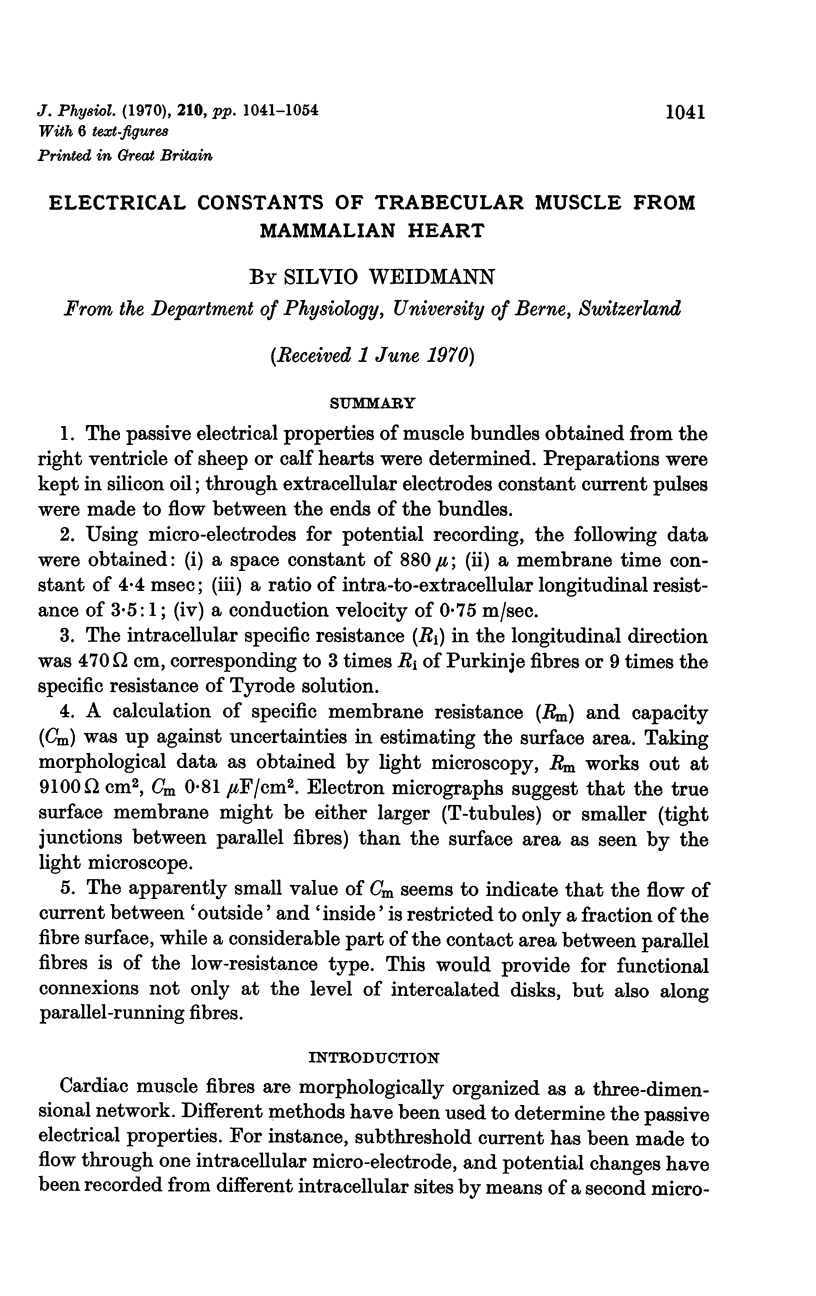
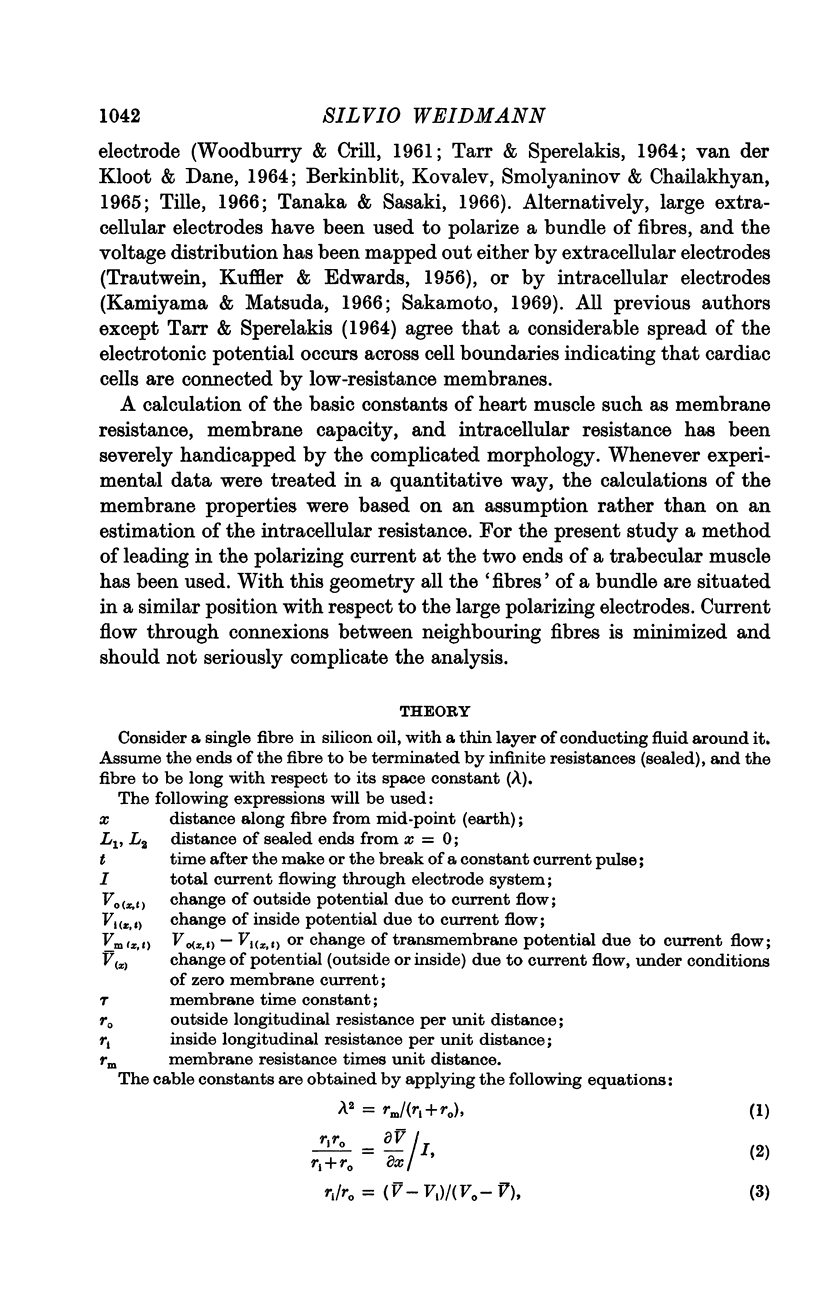
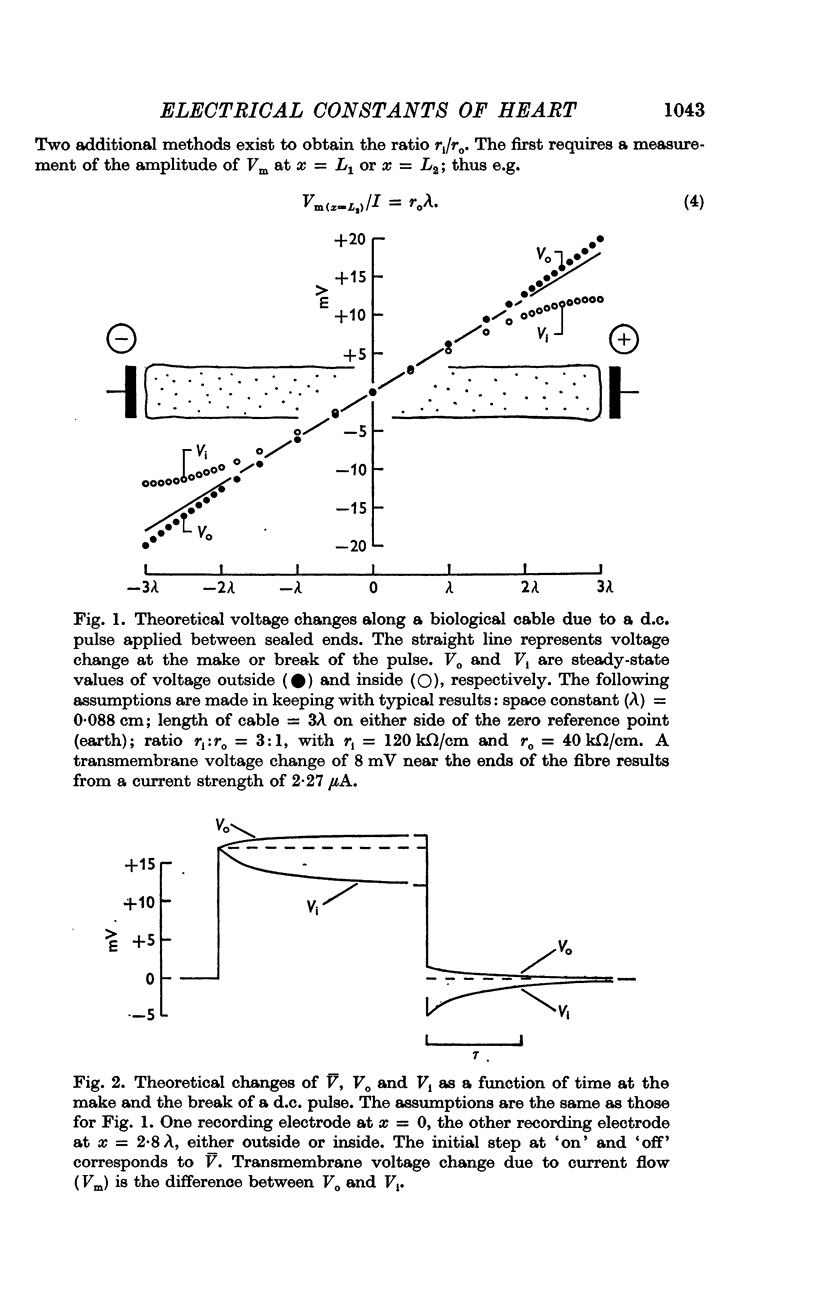
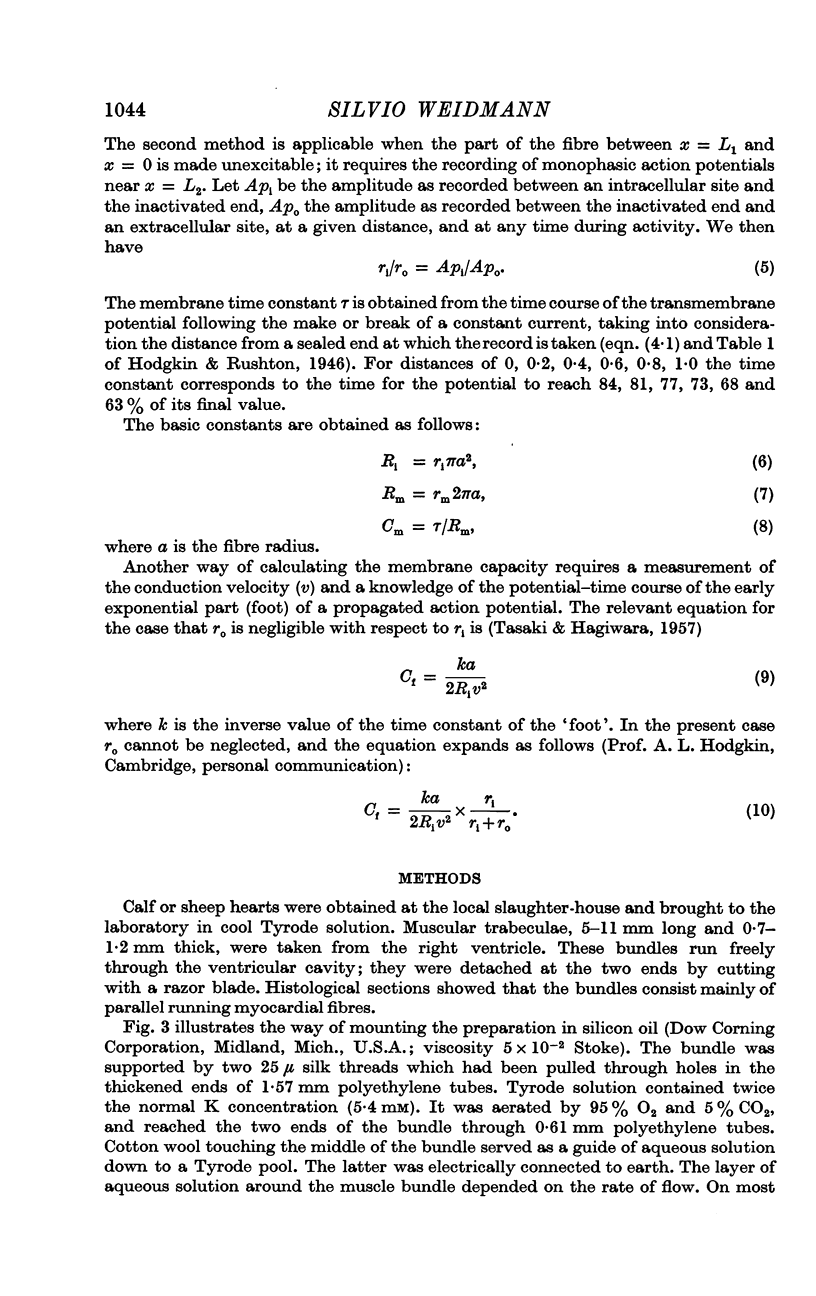
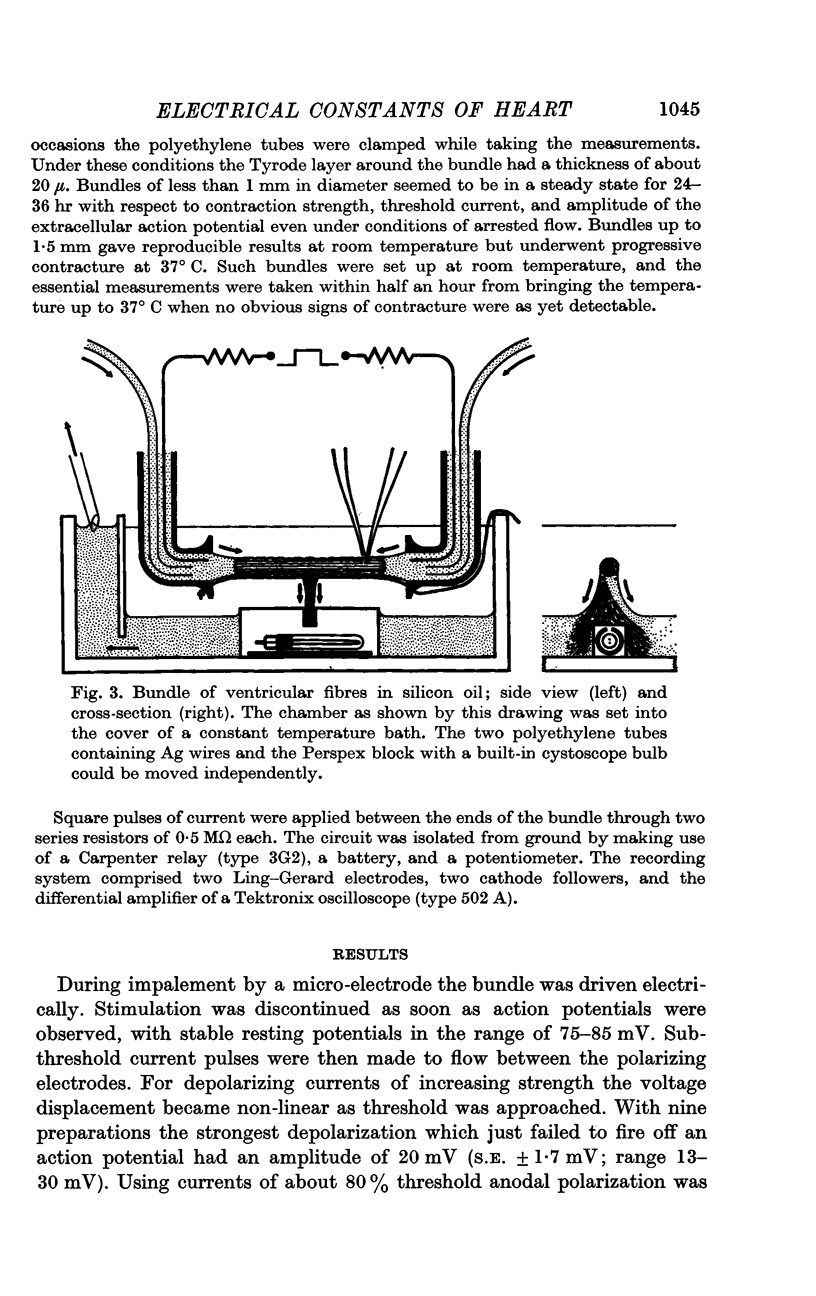
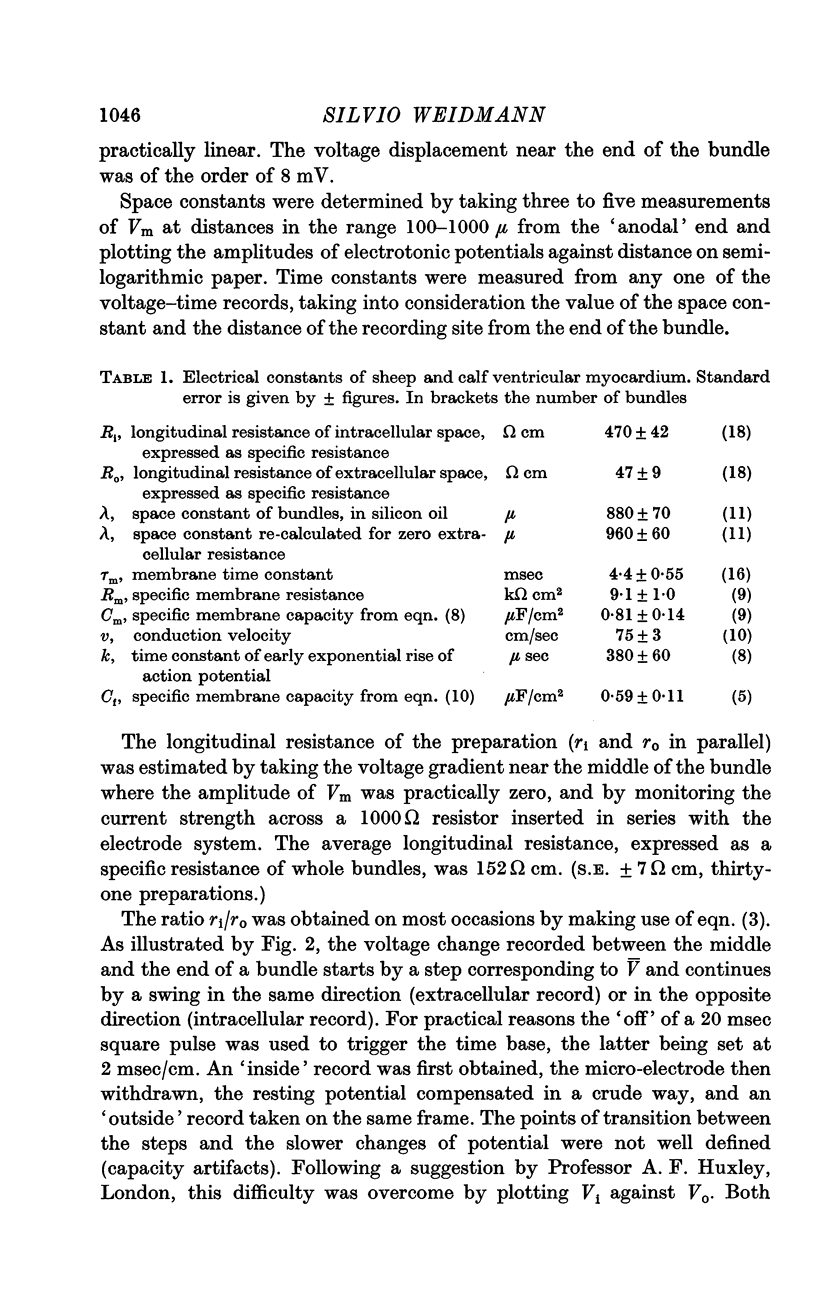
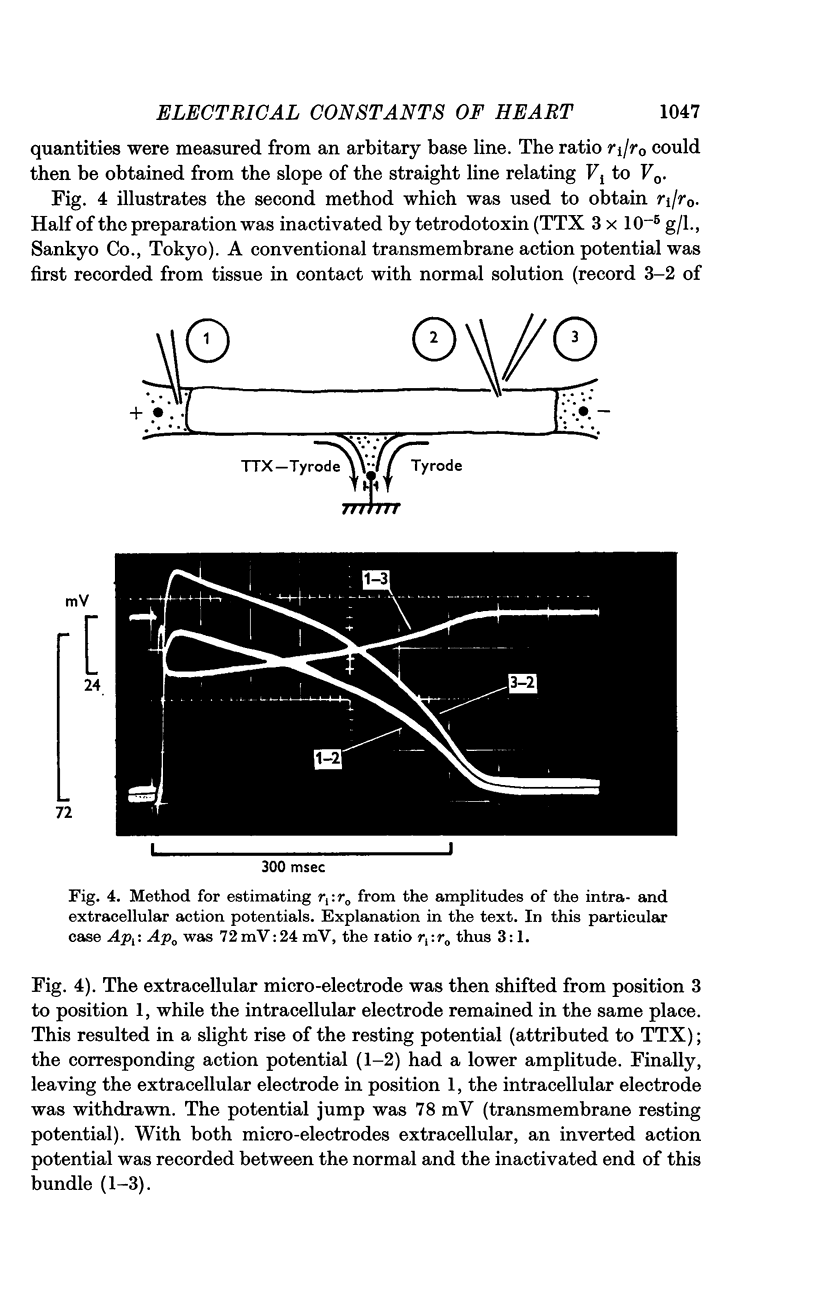
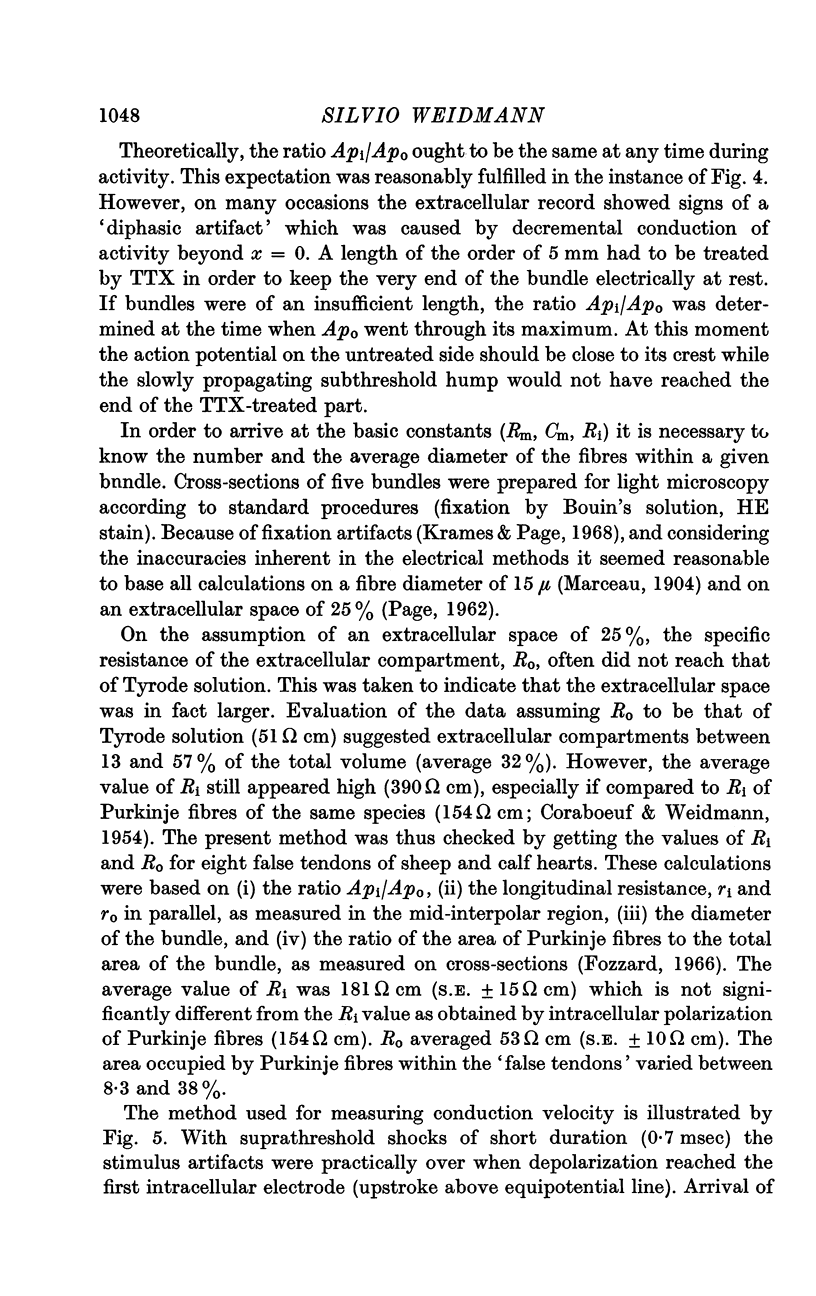
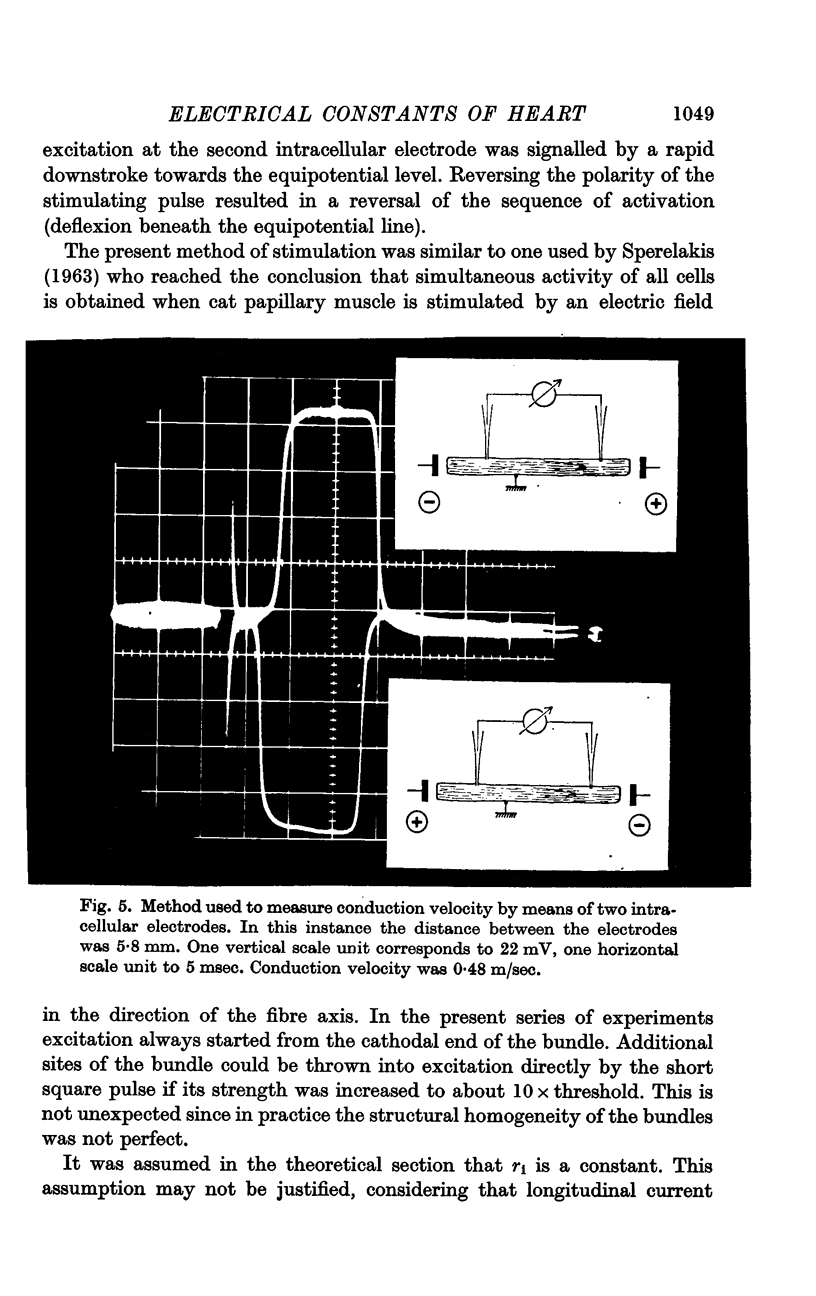
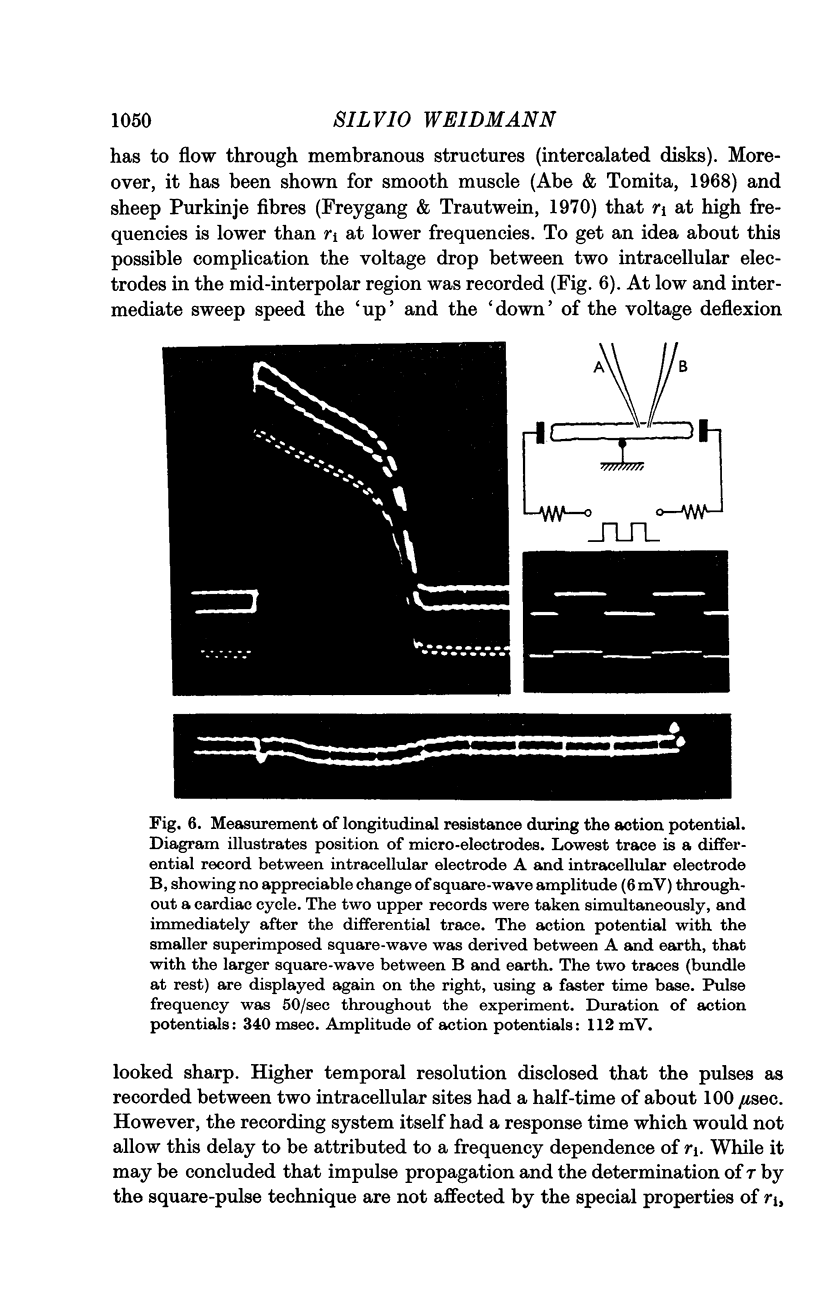
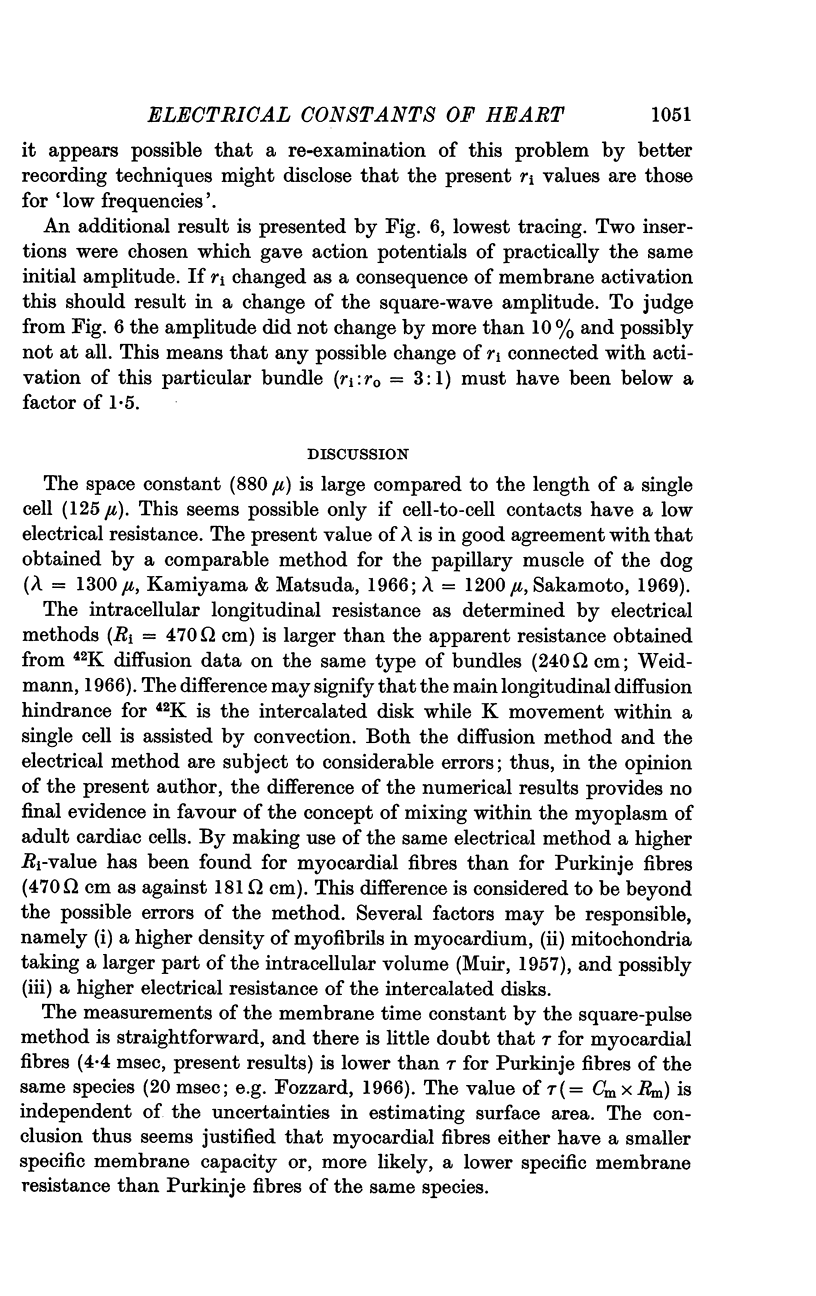
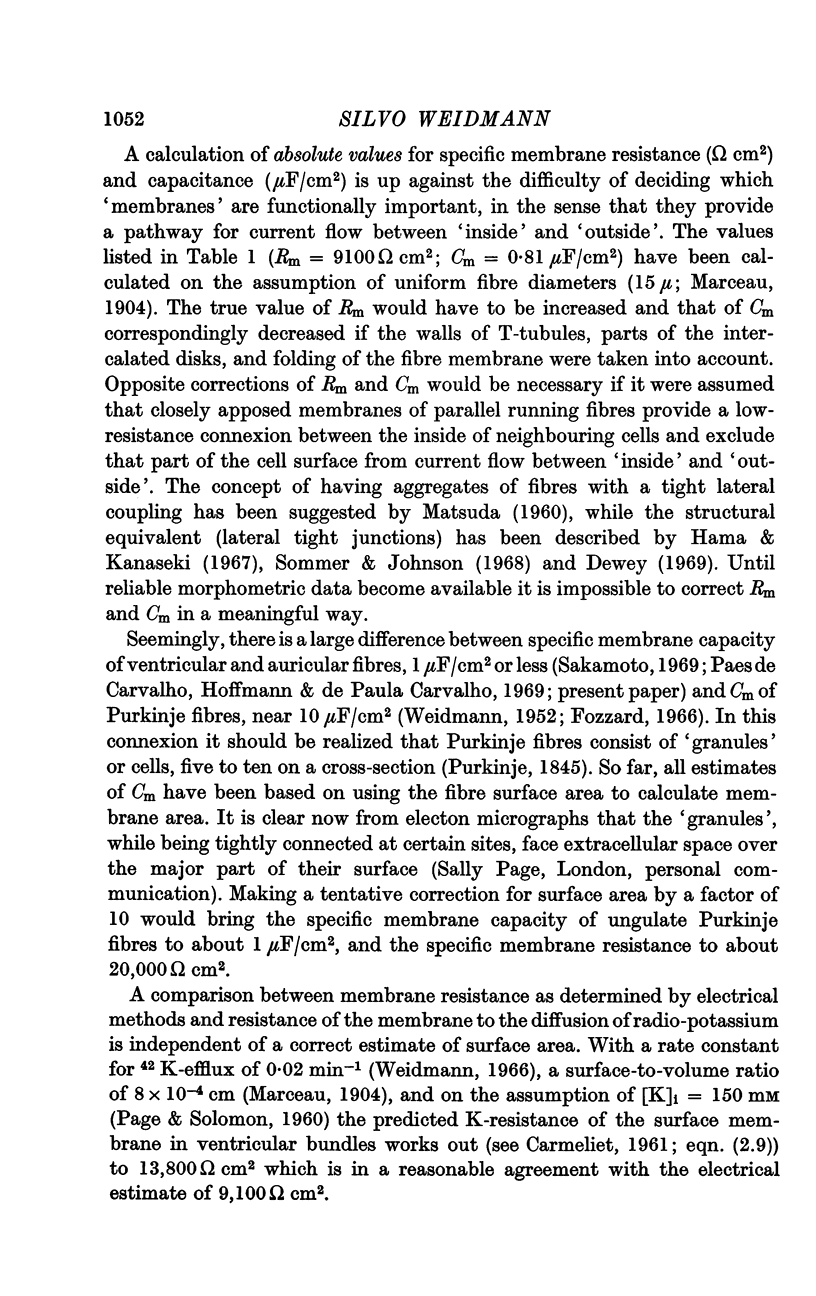
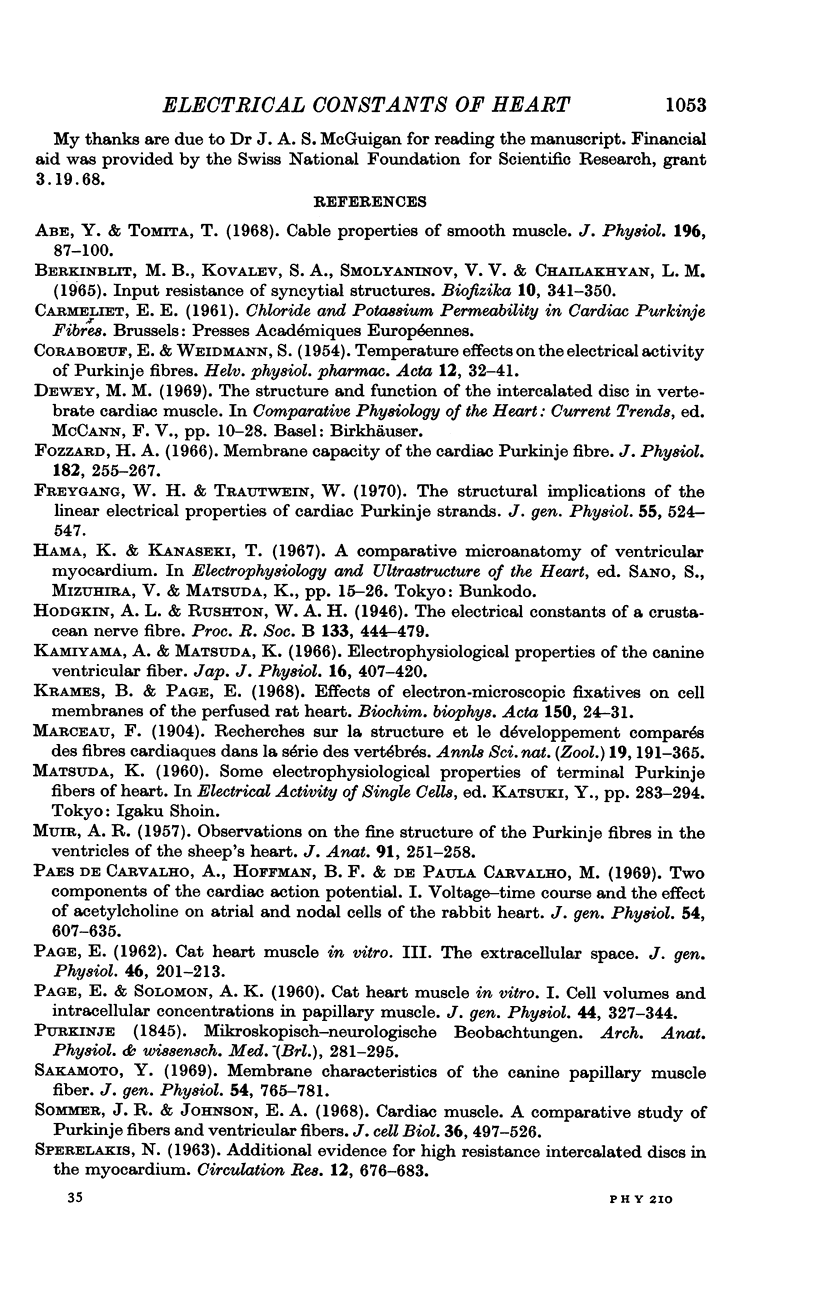
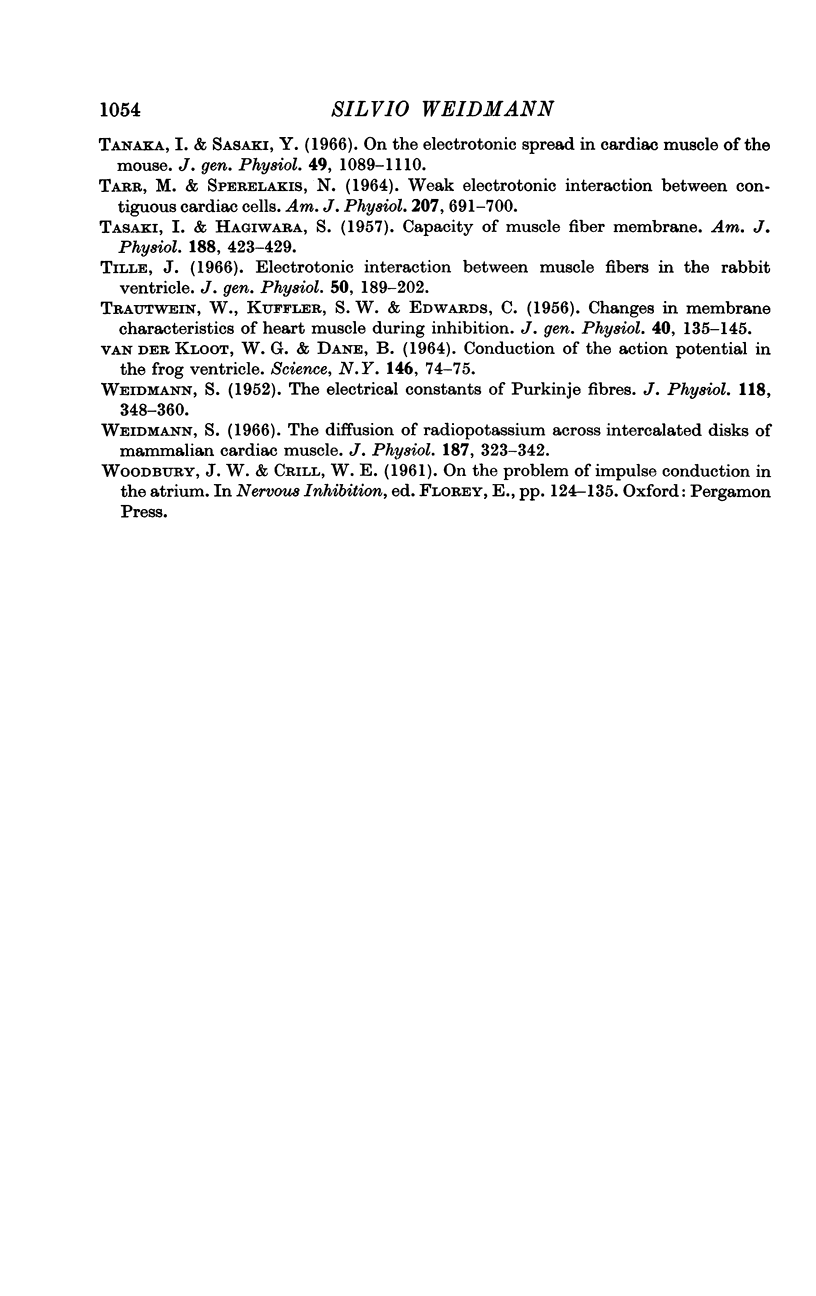
Selected References
These references are in PubMed. This may not be the complete list of references from this article.
- Abe Y., Tomita T. Cable properties of smooth muscle. J Physiol. 1968 May;196(1):87–100. doi: 10.1113/jphysiol.1968.sp008496. [DOI] [PMC free article] [PubMed] [Google Scholar]
- CORABOEUF E., WEIDMANN S. Temperature effects on the electrical activity of Purkinje fibres. Helv Physiol Pharmacol Acta. 1954;12(1):32–41. [PubMed] [Google Scholar]
- Dewey M. M. The structure and function of the intercalated disc in vertebrate cardiac muscle. Experientia Suppl. 1969;15:10–28. doi: 10.1007/978-3-0348-6800-6_2. [DOI] [PubMed] [Google Scholar]
- EDWARDS C., KUFFLER S. W., TRAUTWEIN W. Changes in membrane characteristics of heart muscle during inhibition. J Gen Physiol. 1956 Sep 20;40(1):135–145. doi: 10.1085/jgp.40.1.135. [DOI] [PMC free article] [PubMed] [Google Scholar]
- Fozzard H. A. Membrane capacity of the cardiac Purkinje fibre. J Physiol. 1966 Jan;182(2):255–267. doi: 10.1113/jphysiol.1966.sp007823. [DOI] [PMC free article] [PubMed] [Google Scholar]
- Freygang W. H., Trautwein W. The structural implications of the linear electrical properties of cardiac Purkinje strands. J Gen Physiol. 1970 Apr;55(4):524–547. doi: 10.1085/jgp.55.4.524. [DOI] [PMC free article] [PubMed] [Google Scholar]
- Kamiyama A., Matsuda K. Electrophysiological properties of the canine ventricular fiber. Jpn J Physiol. 1966 Aug 15;16(4):407–420. doi: 10.2170/jjphysiol.16.407. [DOI] [PubMed] [Google Scholar]
- MUIR A. R. Observations on the fine structure of the Purkinje fibres in the ventricles of the sheep's heart. J Anat. 1957 Apr;91(2):251–258. [PMC free article] [PubMed] [Google Scholar]
- PAGE E. Cat heart muscle in vitro. III. The extracellular space. J Gen Physiol. 1962 Nov;46:201–213. doi: 10.1085/jgp.46.2.201. [DOI] [PMC free article] [PubMed] [Google Scholar]
- PAGE E., SOLOMON A. K. Cat heart muscle in vitro. I. Cell volumes and intracellular concentrations in papillary muscle. J Gen Physiol. 1960 Nov;44:327–344. doi: 10.1085/jgp.44.2.327. [DOI] [PMC free article] [PubMed] [Google Scholar]
- SPERELAKIS N. Additional evidence for high-resistance intercalated discs in the myocardium. Circ Res. 1963 Jun;12:676–683. doi: 10.1161/01.res.12.6.676. [DOI] [PubMed] [Google Scholar]
- Sommer J. R., Johnson E. A. Cardiac muscle. A comparative study of Purkinje fibers and ventricular fibers. J Cell Biol. 1968 Mar;36(3):497–526. doi: 10.1083/jcb.36.3.497. [DOI] [PMC free article] [PubMed] [Google Scholar]
- TARR M., SPERELAKIS N. WEAK ELECTROTONIC INTERACTION BETWEEN CONTIGUOUS CARDIAC CELLS. Am J Physiol. 1964 Sep;207:691–700. doi: 10.1152/ajplegacy.1964.207.3.691. [DOI] [PubMed] [Google Scholar]
- TASAKI I., HAGIWARA S. Capacity of muscle fiber membrane. Am J Physiol. 1957 Mar;188(3):423–429. doi: 10.1152/ajplegacy.1957.188.3.423. [DOI] [PubMed] [Google Scholar]
- Tanaka I., Sasaki Y. On the electrotonic spread in cardiac muscle of the mouse. J Gen Physiol. 1966 Jul;49(6):1089–1110. doi: 10.1085/jgp.0491089. [DOI] [PMC free article] [PubMed] [Google Scholar]
- Tille J. Electrotonic interaction between muscle fibers in the rabbit ventricle. J Gen Physiol. 1966 Sep;50(1):189–202. doi: 10.1085/jgp.50.1.189. [DOI] [PMC free article] [PubMed] [Google Scholar]
- VANDERKLOOT W. G., DANE B. CONDUCTION OF THE ACTION POTENTIAL IN THE FROG VENTRICLE. Science. 1964 Oct 2;146(3640):74–75. doi: 10.1126/science.146.3640.74. [DOI] [PubMed] [Google Scholar]
- WEIDMANN S. The electrical constants of Purkinje fibres. J Physiol. 1952 Nov;118(3):348–360. doi: 10.1113/jphysiol.1952.sp004799. [DOI] [PMC free article] [PubMed] [Google Scholar]
- Weidmann S. The diffusion of radiopotassium across intercalated disks of mammalian cardiac muscle. J Physiol. 1966 Nov;187(2):323–342. doi: 10.1113/jphysiol.1966.sp008092. [DOI] [PMC free article] [PubMed] [Google Scholar]
- de Carvalho A. P., Hoffman B. F., de Carvalho M. P. Two components of the cardiac action potential. I. Voltage-time course and the effect of acetylcholine on atrial and nodal cells of the rabbit heart. J Gen Physiol. 1969 Nov;54(5):607–635. doi: 10.1085/jgp.54.5.607. [DOI] [PMC free article] [PubMed] [Google Scholar]


